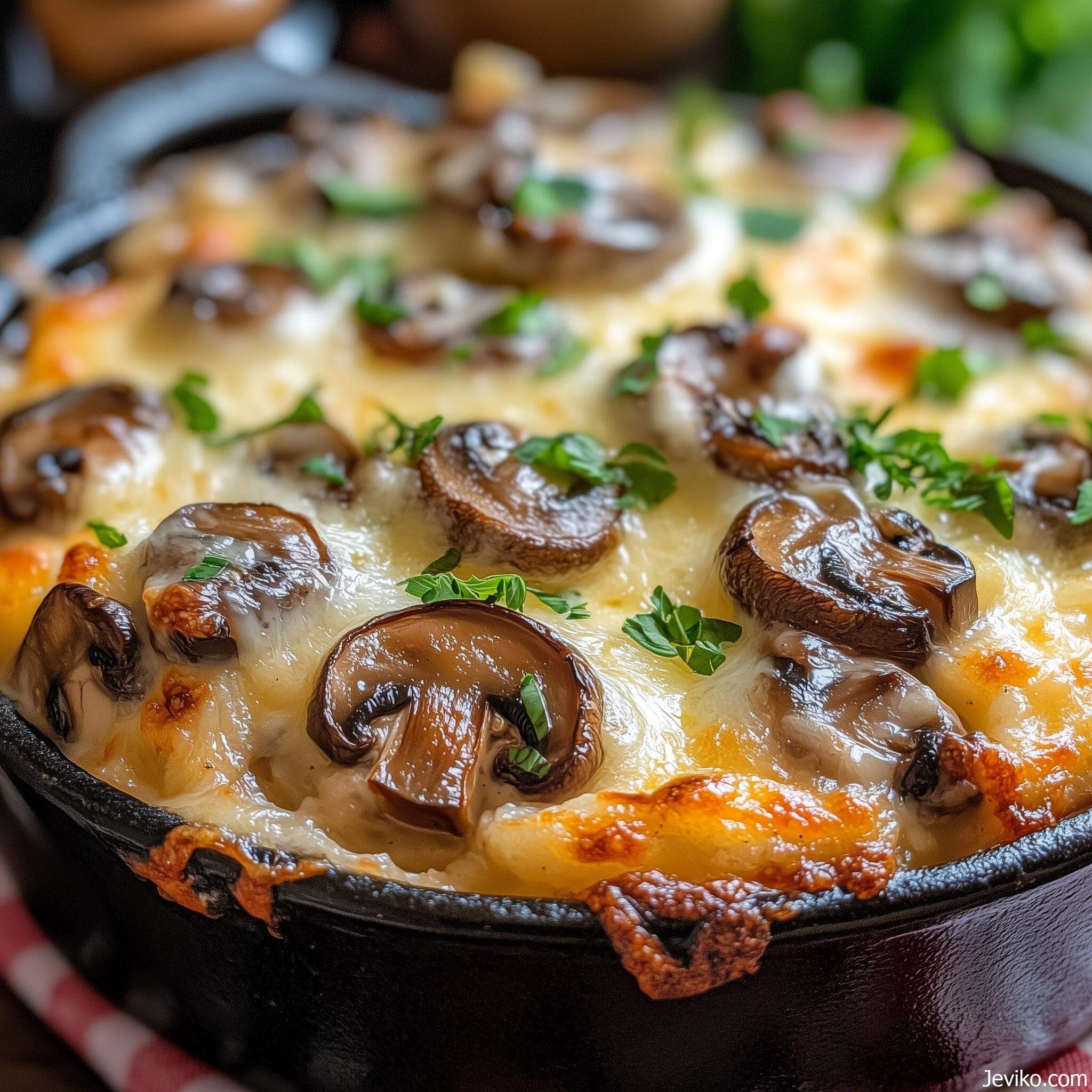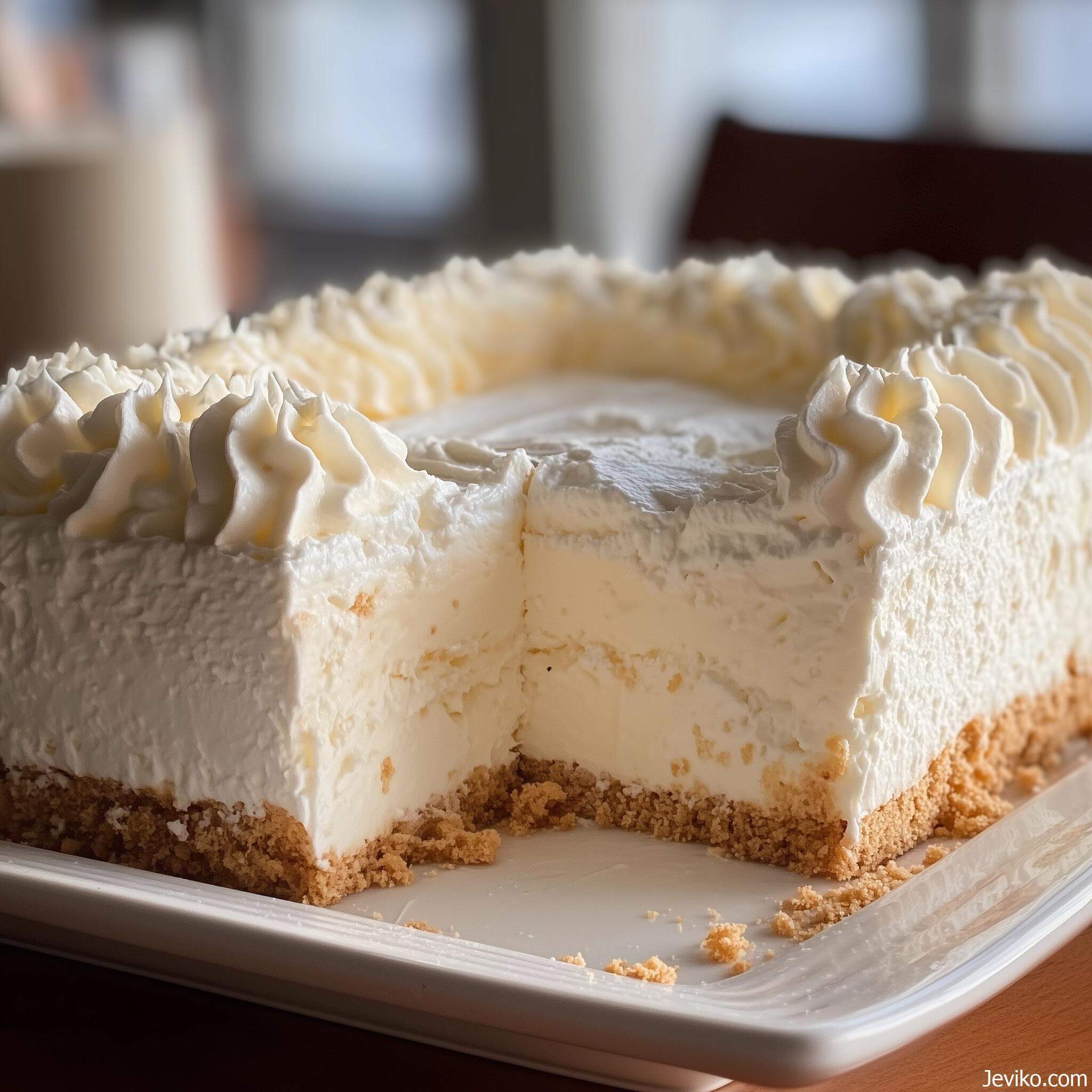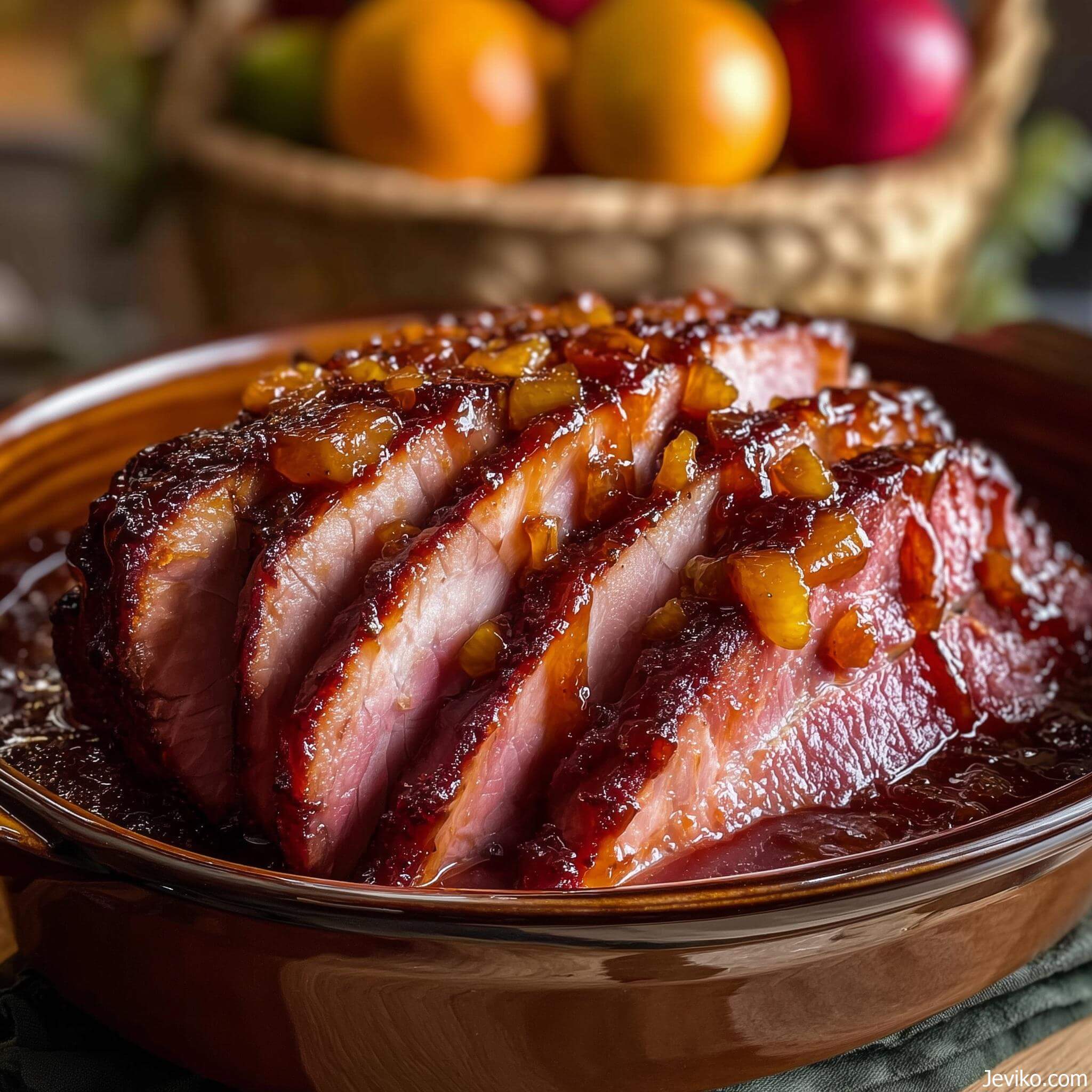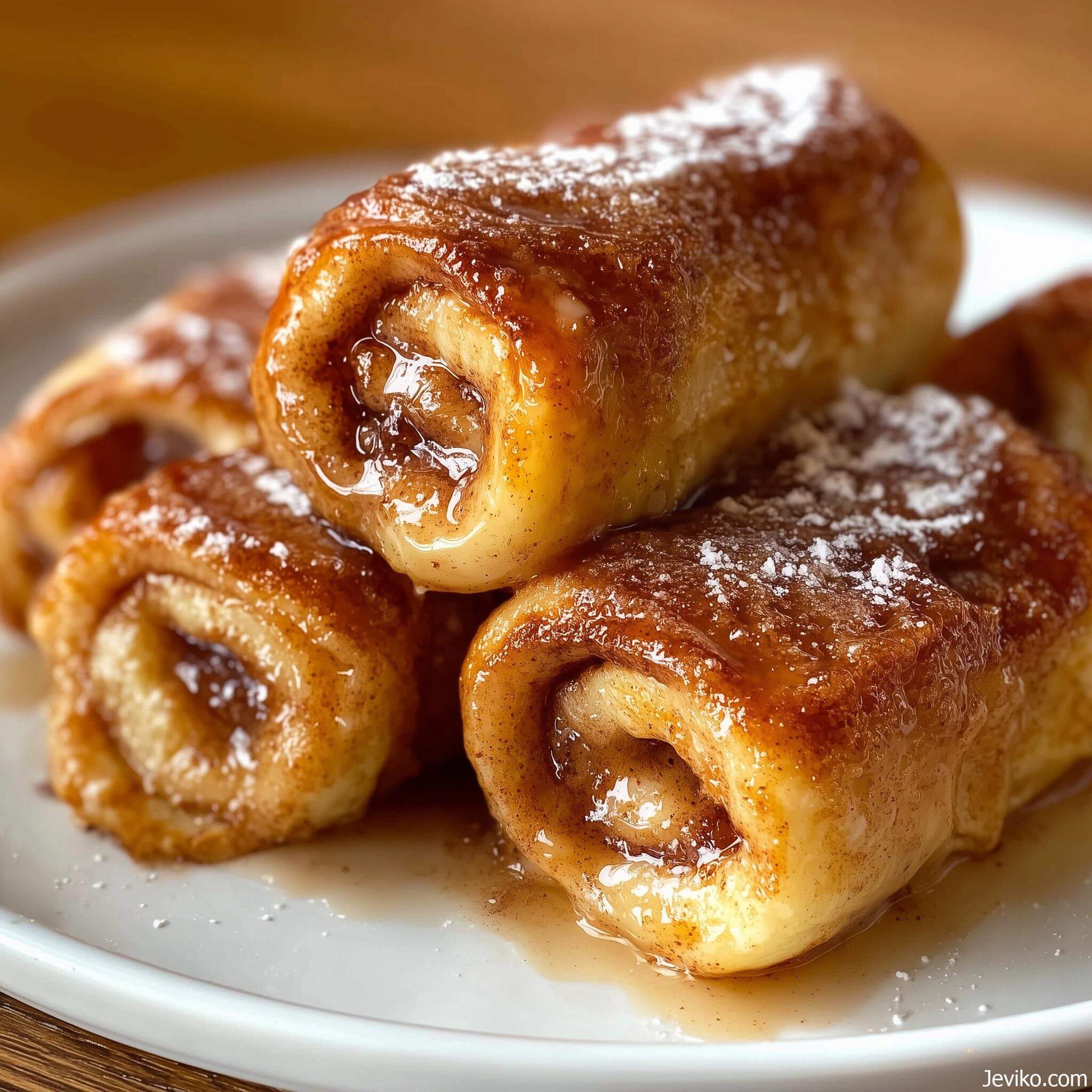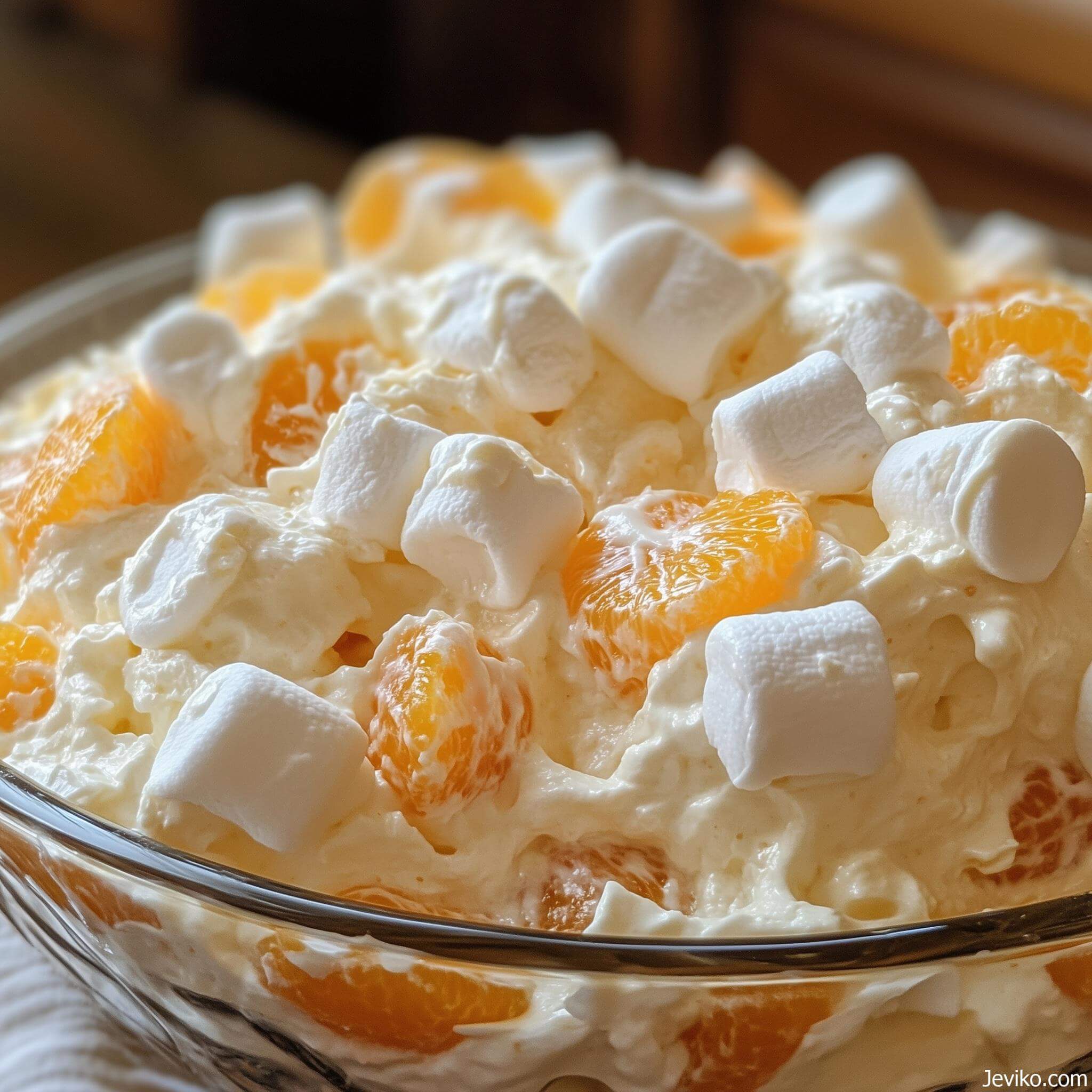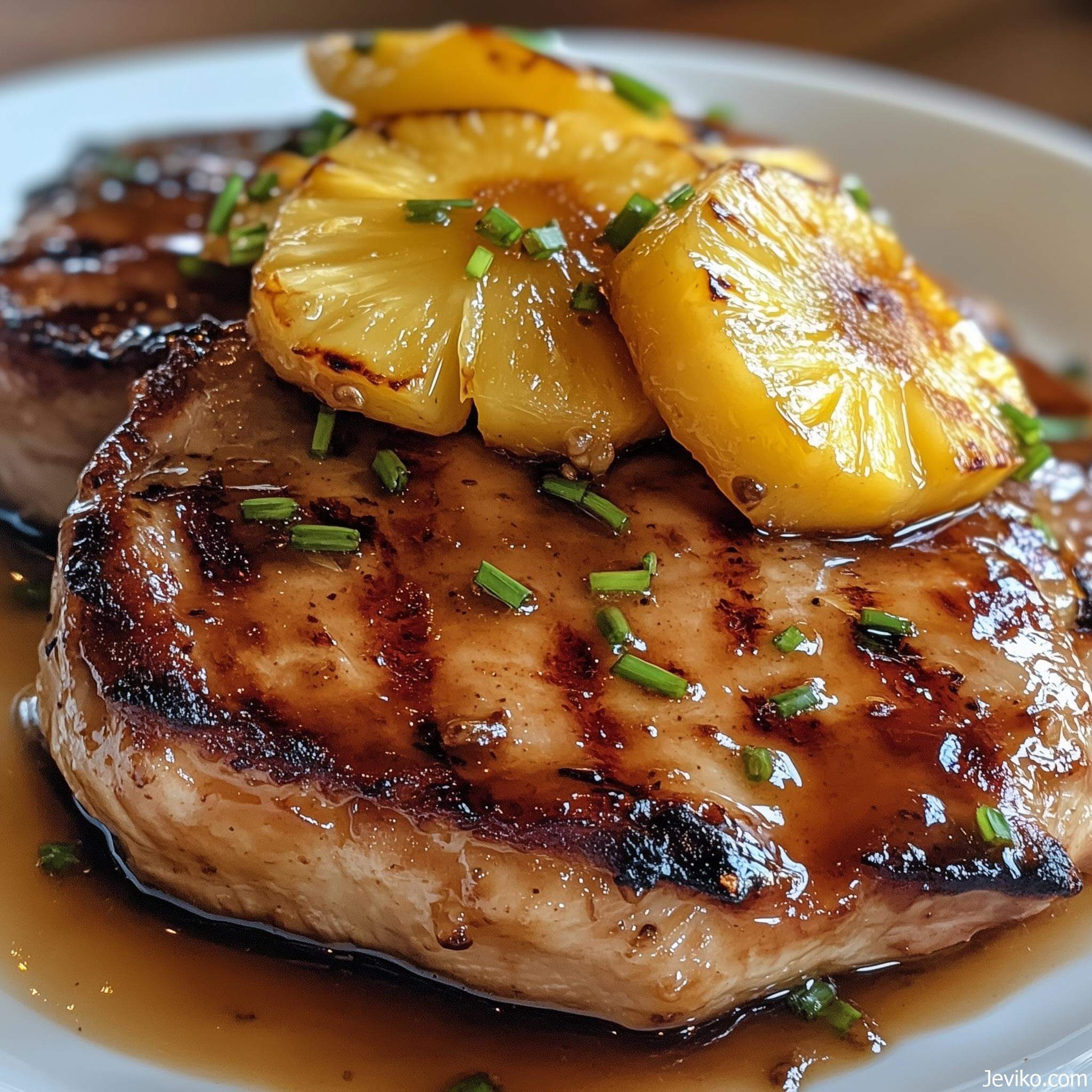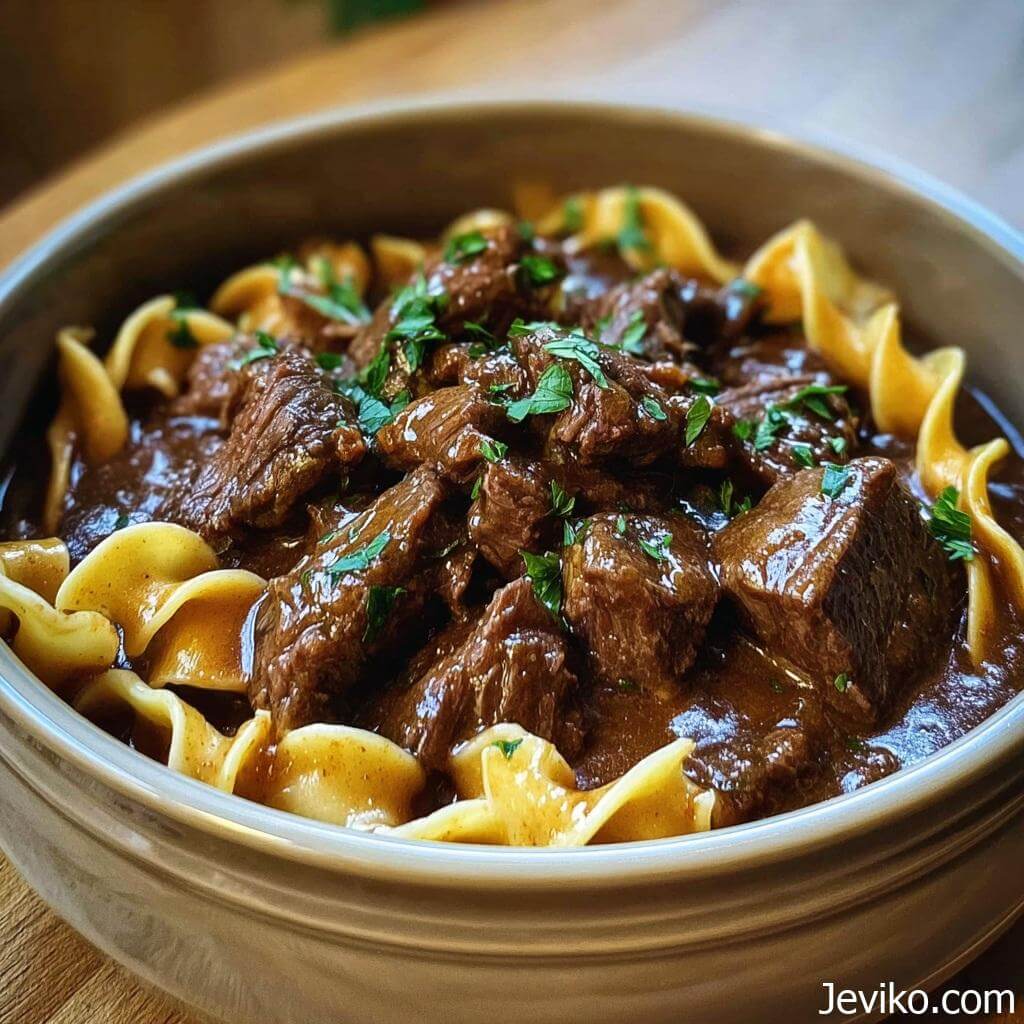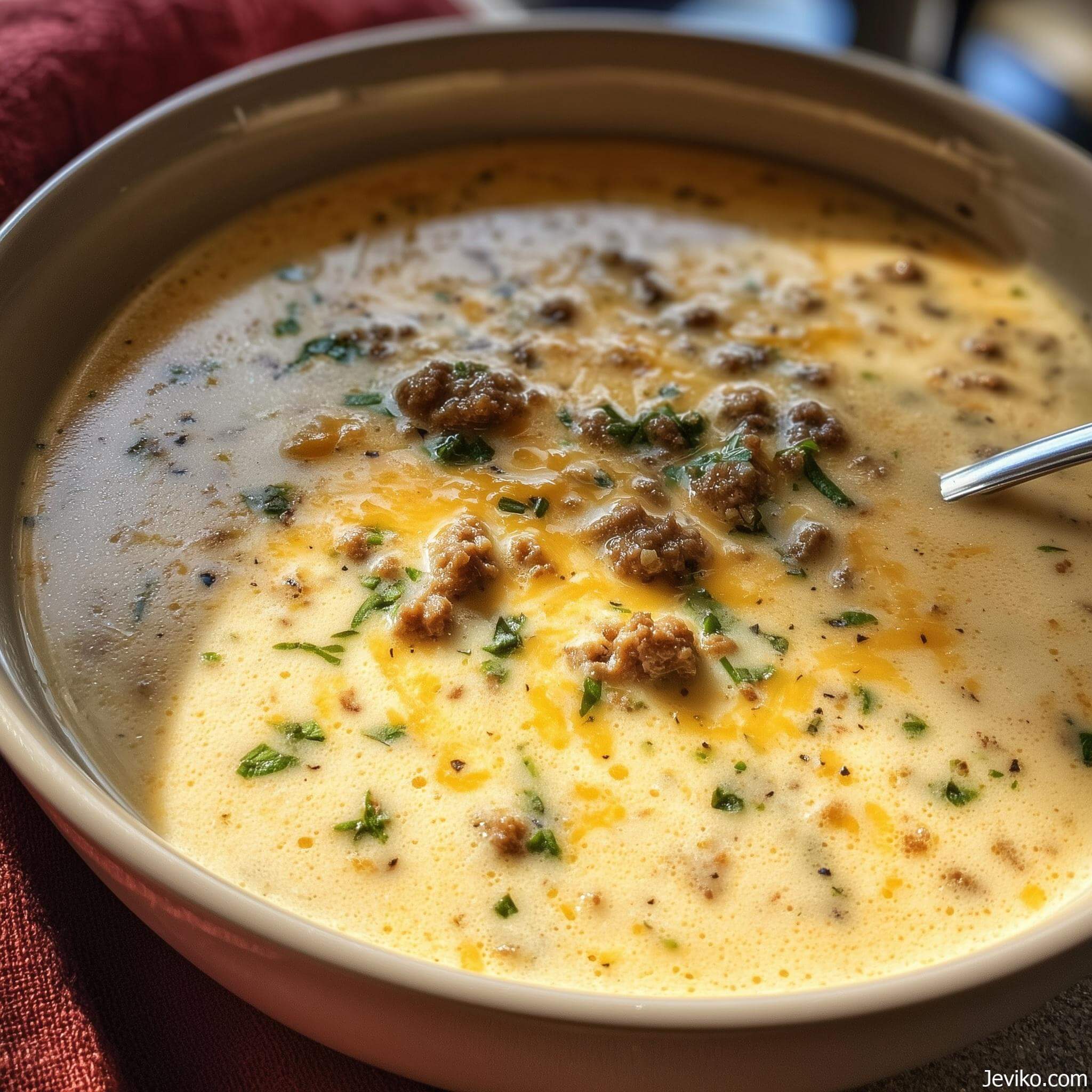
On a Tuesday that looked like every other Tuesday, I stood in my kitchen with a box of macaroni and not much inspiration. Dinner needed to be simple, fast, and better than plain. That’s when I noticed a small can of diced green chiles tucked into the pantry. It wasn’t part of any plan, but the idea showed up all at once: fold that bright, mildly spicy chile flavor into a proper, from-scratch cheese sauce and let the two get to know each other. I started whisking a roux, warmed milk in slow circles, reached for Monterey Jack because it melts like a dream, and added sharp cheddar for depth. When the chiles went in, the aroma changed—creamy and familiar, yes, but edged with a soft, roasted heat that made the whole pot feel alive.
That first batch did not last. The sauce clung to each elbow, the cumin quietly rounded everything out, and the heat stayed gentle—present, not pushy. Since then, this has become a weeknight regular that also holds up at potlucks. It’s the same comfort everyone loves about mac and cheese, with a small shift that makes it interesting enough to serve to friends. You can keep it stovetop and creamy, or slide it under the broiler with a few crumbs on top if you want a little crunch. Either way, it’s reliable and warm, the kind of dish that settles nicely on the table and doesn’t ask for attention. It just does its job.
Why This Version Works:
- Balanced heat, not a dare. Green chiles bring tang and warmth more than fire. Canned diced chiles make this easy any night; roasted Hatch chiles, when you can find them, add light smoke. Either way, the flavor folds into the cheese instead of sitting on top of it.
- Two cheeses, one job: Monterey Jack for melt and body; sharp cheddar for character. They work together, creating a sauce that’s smooth but not flat.
- A careful roux. Butter and flour need a minute or two to cook before milk goes in; that short patience gives you a silky sauce that never feels pasty.
- Seasoning that supports, not masks. Cumin, a touch of garlic and onion powder, a pinch of crushed red pepper. Nothing loud; just enough to make the chiles sing.
Ingredient Notes (What I Use and Why):
- Elbow macaroni (1 pound): Holds onto the sauce well. Shells or cavatappi work, too. Cook to just shy of tender so they finish in the hot sauce without turning soft.
- Butter (3 tablespoons) + All-purpose flour (3 tablespoons): Equal parts for a medium roux. The butter should foam; the flour should lose its raw smell but not color too much.
- Whole milk (3 cups): Rich enough to carry cheese without splitting. If you only have 2% milk, add a splash of cream if possible. Avoid ultra-high heat once the milk is in.
- Monterey Jack (8 oz), freshly shredded: Melts quickly and evenly, giving body without graininess. Freshly shredded cheese melts better than pre-shredded.
- Sharp cheddar (4 oz), freshly shredded: Adds a clean, savory edge. Medium cheddar is fine for a softer finish.
- Diced green chiles (two 4-oz cans, drained): Mild heat with bright chile flavor. If using roasted Hatch chiles, peel, seed, and dice; aim for about 1 cup.
- Spices: ½ teaspoon ground cumin, ½ teaspoon garlic powder, ¼ teaspoon onion powder, ⅛ teaspoon crushed red pepper flakes. Adjust to taste.
- Salt and black pepper: Season the pasta water well and taste the sauce before salting; cheese adds salt, so go thoughtfully.
- Optional finishing ingredients if you want a baked top:
- Panko breadcrumbs (½ cup) + 1 tablespoon melted butter
- Extra cheese (½ cup) for topping
Technique: Small Decisions That Change the Sauce:
- Salt the pasta water like the sea. The pasta carries seasoning into the dish. If the water isn’t well salted, the sauce will have to work harder.
- Whisk in milk gradually. After cooking the roux 2–3 minutes, add milk a little at a time, whisking until smooth before adding more. This prevents lumps and keeps the sauce glossy.
- Melt cheese off the heat. When the sauce is thick enough to coat a spoon, take the pot off the burner and add cheese in small handfuls. Stir until each addition disappears before adding more. This keeps the texture silky.
- Steam-dry the pasta. After draining, let it sit in the colander 30–60 seconds so excess water evaporates. Waterlogged pasta thins the sauce.
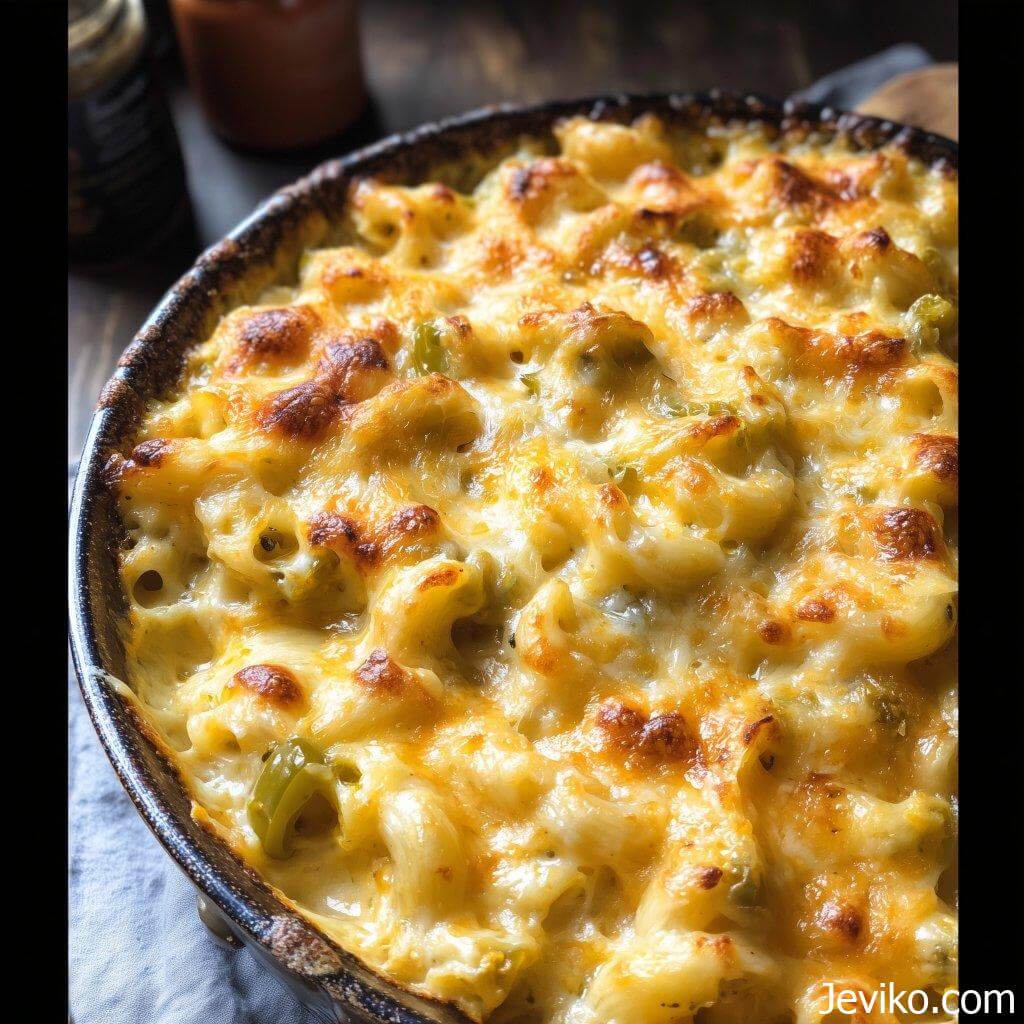
Step-by-Step Recipe:
Green Chile Mac and Cheese
Prep Time: 15 minutes
Cook Time: 20 minutes
Total Time: 35 minutes
Yield: 6–8 servings
Ingredients:
- 1 pound elbow macaroni
- 3 tablespoons unsalted butter
- 3 tablespoons all-purpose flour
- 3 cups whole milk
- 8 oz Monterey Jack cheese, freshly shredded
- 4 oz sharp cheddar cheese, freshly shredded
- 2 (4-oz) cans diced green chiles, drained well (or ~1 cup roasted, diced Hatch chiles)
- ½ teaspoon ground cumin
- ½ teaspoon garlic powder
- ¼ teaspoon onion powder
- ⅛ teaspoon crushed red pepper flakes
- ½ teaspoon fine salt, or to taste
- ¼ teaspoon freshly ground black pepper
- Optional for a baked topping
- ½ cup panko breadcrumbs tossed with 1 tablespoon melted butter
- ½ cup additional shredded cheese
Directions:
- Cook the pasta: Bring a large pot of well-salted water to a boil. Add the macaroni and cook until just tender (check a minute before the package time). Drain and let the pasta steam-dry in the colander for a minute. Set aside.
- Make the roux:In a wide saucepan or Dutch oven, melt the butter over medium heat. Sprinkle in the flour and whisk until smooth. Cook, whisking often, for 2–3 minutes; it should smell toasty, not raw, and stay pale.
- Build the sauce: Slowly pour in the milk while whisking continuously to avoid lumps. Keep the heat at medium and whisk frequently until the sauce thickens enough to coat the back of a spoon, 5–7 minutes. You should be able to draw a clean line through the sauce on the spoon with your finger.
- Season and add cheese: Remove the pan from the heat. Stir in cumin, garlic powder, onion powder, crushed red pepper flakes, black pepper, and ¼ teaspoon salt to start. Add the Monterey Jack and cheddar a handful at a time, stirring until fully melted and smooth before the next addition.
- Fold in chiles: Stir in the drained green chiles. Taste and adjust salt and spices. The sauce should be creamy, seasoned, and gently warm from the chiles and cumin.
- Combine with pasta: Add the cooked macaroni to the sauce and stir until every piece is coated. Serve now for a creamy stovetop version or proceed to an optional bake for a crisp top.
- Optional bake (for a crust): Heat the broiler to high and position a rack in the upper third. Transfer the mac and cheese to a broiler-safe dish (or leave in an oven-safe Dutch oven). Mix panko with melted butter; sprinkle over the surface along with extra cheese if using. Broil 1–3 minutes, watching closely, until golden and bubbling. Rest 5 minutes before serving.
- Storage: Cool leftovers; refrigerate in an airtight container up to 4 days. Reheat gently on the stovetop with a splash of milk to loosen, or cover and warm in a low oven.
Make-Ahead, Freezer, and Reheat Notes
- Make-ahead (same day): Prepare the sauce and cook the pasta in the morning; keep them separate and refrigerated. Rewarm the sauce gently (add a few tablespoons of milk), fold in pasta, and finish on the stovetop or under the broiler before serving.
- Overnight: Assemble fully in a casserole dish, press plastic wrap directly onto the surface, and refrigerate. Next day, loosen with a small splash of milk, top with crumbs/cheese, and bake at 350°F (175°C) until hot and bubbling, 20–25 minutes, then broil to brown.
- Freezing: Creamy sauces with cheese can separate after freezing. If you need to freeze, do so unbaked in portions; thaw overnight and reheat very gently with milk, whisking to restore creaminess.
Variations and Swaps:
- Hatch chile season: Roast, peel, seed, and dice medium-heat Hatch chiles. Use about 1 cup and reduce crushed red pepper if your chiles are hotter.
- Pepper jack swap: Replace some Monterey Jack with pepper jack for a small lift in heat; keep cheddar for balance.
- Smoky note: Add ¼ teaspoon smoked paprika to the seasonings. It pairs well with roasted chiles.
- Protein add-ins: Fold in 1½ cups shredded rotisserie chicken or crisped bacon crumbles after the cheese melts. Keep the sauce moderately thick so add-ins don’t thin it out.
- Vegetable boost: Stir in 1 cup corn kernels, or 1 cup sautéed bell peppers and onions. Warm them in the sauce so no one bites into cold vegetables.
- Gluten-free: Use gluten-free elbows you like and replace flour with a 1:1 gluten-free blend (or whisk 2 teaspoons cornstarch into cold milk, then add to melted butter in place of roux; simmer gently until thick).
- Lighter dairy: 2% milk will work; add 2–3 tablespoons half-and-half or evaporated milk for extra body if using lower-fat milk.
Troubleshooting:
- Sauce looks thin: Keep cooking over medium heat, whisking, until it thickens; the roux needs time. If still thin after 7–8 minutes, whisk 1 teaspoon cornstarch into 2 tablespoons cold milk and stir in, simmering briefly.
- Sauce turned grainy: Cheese was added over high heat or all at once. Take the pan off the heat; whisk in a tablespoon or two of warm milk. Next time, add cheese gradually off heat.
- Too spicy: Stir in a bit more milk and a small handful of Monterey Jack to dilute the heat. A squeeze of lime can brighten and soften perceived spice.
- Not enough flavor: Add a pinch more salt first (it often fixes it). Then a bit more cumin and black pepper. If you used very mild chiles, a small pinch of crushed red pepper wakes it up.
How I Serve It:
- This stands on its own in wide bowls, but simple sides make a complete plate without crowding the flavors. A crisp salad with lime vinaigrette, sliced tomatoes with salt and olive oil, or roasted broccoli work well. If this is a side, it’s excellent next to grilled chicken, seared steak, or roasted vegetables. Leftovers turn into quick lunches; the sauce loosens easily with a splash of milk in a warm pan.
A Few Quiet Tips Before You Start
Shred cheese from a block; pre-shredded is convenient but includes starches that can keep sauces from going perfectly smooth.
Drain chiles thoroughly. If they’re watery, press them lightly between paper towels so they don’t thin the sauce.
Keep the heat moderate. High heat makes milk scorch and cheese seize; medium gives you control.
Taste as you go. The best version is the one tuned to your kitchen—your salt, your chiles, your cheeses.

